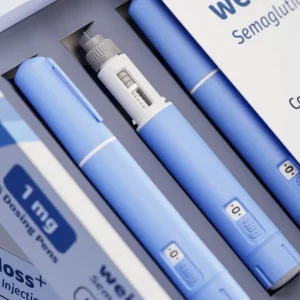When it comes to a stroke, every second counts. Stroke is a leading cause of death and long-term disability, but rapid treatment can significantly improve outcomes. This is why understanding the importance of early stroke intervention is crucial for everyone.
What is a Stroke?
A stroke occurs when blood flow to a part of the brain is interrupted, depriving brain cells of oxygen and nutrients. This can happen due to a blocked artery (ischemic stroke) or the rupture of a blood vessel (hemorrhagic stroke). Without a steady supply of oxygen, brain cells begin to die within minutes.
Why is Early Intervention Critical?
The phrase “time is brain” perfectly encapsulates the urgency of stroke treatment. The faster blood flow is restored, the less damage occurs to the brain. Early intervention can:
- Reduce brain damage: Minimizing the amount of brain tissue affected by stroke lessens the severity of long-term effects.
- Improve recovery potential: Early treatment increases the likelihood of regaining lost functions like speech, movement, and memory.
- Decrease the risk of complications: Stroke can lead to complications such as pneumonia, blood clots, and seizures. Prompt treatment helps prevent these issues.
- Lower mortality rates: Immediate medical attention significantly reduces the risk of death from stroke.
Recognizing Stroke Symptoms: Act FAST
Prompt recognition of stroke symptoms is essential to receiving timely treatment. Therefore, it is vital for individuals to be able to recognize the signs of a stroke and seek immediate medical help. Remember the acronym FAST:
- F – Face drooping: Does one side of the face droop or feel numb? Ask the person to smile – is their smile uneven?
- A – Arm weakness: Is one arm weak or numb? Ask the person to raise both arms – does one arm drift downward?
- S – Speech difficulty: Is their speech slurred? Can they repeat a simple sentence correctly?
- T – Time to call 911: If someone shows any of these symptoms, call emergency services immediately. Note the time when the symptoms first appeared, as this information is crucial for medical professionals.
Early stroke recognition is crucial to receiving early intervention. Without awareness of stroke symptoms, individuals may not seek emergency medical attention promptly, increasing the likelihood of more serious brain damage and complications.
Treatment Options: A Race Against Time
The type of stroke determines the specific treatment, but the goal is always to restore blood flow to the brain as quickly as possible.
- Ischemic Stroke:
- Medications: Clot-busting drugs like tissue plasminogen activator (tPA) can dissolve the clot and improve blood flow. tPA is most effective when administered within 3 hours of symptom onset, sometimes up to 4.5 hours in specific cases. Generally, the earlier tPA is administered, the better the long-term outcome.
- Mechanical Thrombectomy: In some cases, a minimally invasive procedure can be used to physically remove the clot from the brain. This treatment is often used for larger clots and has a wider treatment window than tPA.
- Hemorrhagic Stroke:
- Medications: Drugs may be used to control blood pressure, reduce bleeding, and prevent seizures.
- Surgery: In some cases, surgery may be necessary to repair the ruptured blood vessel and relieve pressure on the brain.
The Importance of Rehabilitation
Even with prompt treatment, stroke can cause lasting effects. Stroke rehabilitation plays a crucial role in recovery, as it promotes neuroplasticity, which is the brain’s ability to rewire itself. Although the brain is constantly changing, it goes through a period of enhanced neuroplasticity in the first few months after injury.
Participating in rehabilitation during this time window is optimal for regaining lost abilities. In addition to promoting recovery, rehabilitation can also help individuals learn to adapt to any remaining disabilities as they adjust to life after stroke.
Rehabilitation may include:
- Physical therapy: To improve strength, coordination, and mobility.
- Occupational therapy: To regain skills needed for daily living, such as dressing, eating, and bathing.
- Speech therapy: To improve communication and swallowing difficulties.
- Cognitive therapy: To address problems with memory, attention, and problem-solving.
There is always hope for recovery, even years after a stroke. However, the earlier rehabilitation begins, the better the chances of maximizing recovery.
Long-Term Outlook
The long-term effects of a stroke vary depending on the severity, the area of the brain affected, and the individual’s overall health. While some people recover fully, others may experience lasting disabilities. However, with appropriate treatment and rehabilitation, many individuals can significantly improve their quality of life and regain a degree of independence.
Prevention is Key
While early intervention is vital, preventing a stroke in the first place is always the best approach. Here are some key steps to reduce your risk:
- Control blood pressure: High blood pressure is a major risk factor for stroke.
- Eat a healthy diet: Focus on fruits, vegetables, whole grains, and lean protein.
- Maintain a healthy weight: Obesity increases stroke risk.
- Exercise regularly: Aim for at least 30 minutes of moderate-intensity exercise most days of the week.
- Don’t smoke: Smoking significantly increases stroke risk.
- Limit alcohol consumption: Excessive alcohol intake can raise blood pressure and contribute to other risk factors.
- Manage underlying conditions: Conditions like diabetes, high cholesterol, chronic stress, and atrial fibrillation can increase your risk. Work with your doctor to manage these conditions effectively.
The Impact of Stroke on Families
Stroke not only affects the individual but also has a significant impact on families and caregivers. Family members often take on new roles, providing physical and emotional support, managing medications, and coordinating care. This can be challenging and emotionally draining.
Virtual or in-person support groups, counseling, and respite care can help families cope with the challenges and provide much-needed assistance.
Research and Advancements in Stroke Care
Ongoing research continues to improve stroke prevention, treatment, and rehabilitation. Scientists are exploring new medications, innovative therapies, and technologies to minimize brain damage and enhance recovery. These advancements offer hope for better outcomes and improved quality of life for stroke survivors.
Every Minute Matters
Stroke is a serious medical emergency, but with swift action and appropriate care, the impact can be minimized. Remember the signs, act FAST, and seek immediate medical attention.
Early intervention is the key to improving outcomes and increasing the chances of a full recovery. By understanding the importance of timing and taking proactive steps to prevent stroke, we can all contribute to reducing the burden of this devastating condition.









